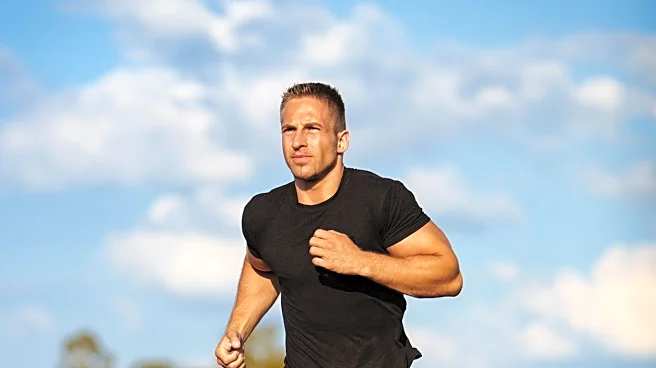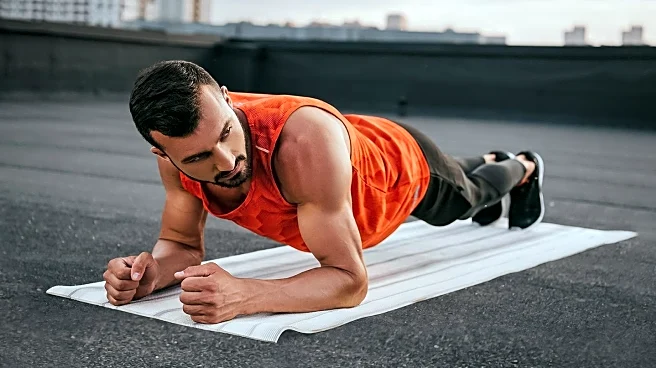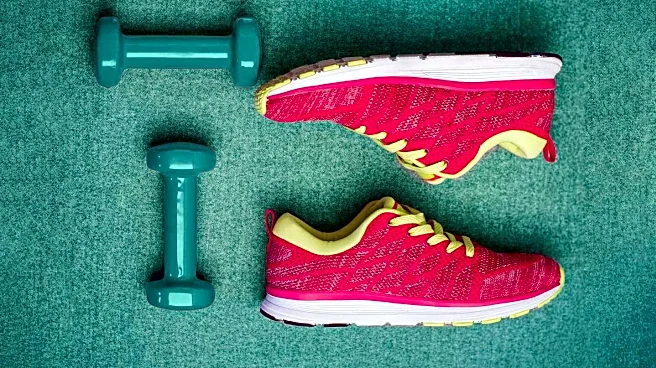What's Happening?
Certified trainer and We Run coach Amanda Grimm has introduced a 30-minute walking workout designed to fit into a lunch break without the need for a change of clothes. The workout consists of alternating
between slow, moderate, and fast-paced walking, aiming to improve fitness, support weight loss, and strengthen bones and muscles. Grimm emphasizes the cumulative benefits of regular walking workouts, suggesting that walking four to five times a week can lead to noticeable changes in health and well-being. The routine includes a warm-up, a series of paced walks, and a cool-down with stretching exercises.
Why It's Important?
The simplicity and accessibility of the 30-minute walking workout make it an attractive option for individuals seeking to incorporate exercise into their daily routine without significant time investment. This approach addresses common barriers to regular exercise, such as time constraints and the need for specialized equipment or attire. By promoting regular physical activity, the workout can contribute to improved cardiovascular health, weight management, and overall physical fitness. It also offers a practical solution for those with sedentary lifestyles, potentially reducing the risk of chronic diseases associated with inactivity.
What's Next?
As more individuals adopt this walking workout, there may be increased interest in similar accessible fitness routines that can be integrated into daily life. Fitness professionals and health advocates might explore additional strategies to encourage regular physical activity among diverse populations. Employers could consider promoting such workouts as part of workplace wellness programs, recognizing the benefits of physical activity for employee health and productivity. The growing popularity of walking workouts could also lead to further research into their long-term health impacts.
Beyond the Headlines
The emphasis on walking as a form of exercise highlights broader cultural shifts towards more sustainable and inclusive fitness practices. Walking is a low-impact activity that can be performed by people of various ages and fitness levels, making it a universally accessible form of exercise. This trend may encourage a reevaluation of traditional fitness paradigms, prioritizing activities that are both effective and inclusive. Additionally, the focus on walking aligns with environmental considerations, as it promotes a form of exercise that does not require energy-intensive facilities or equipment.











